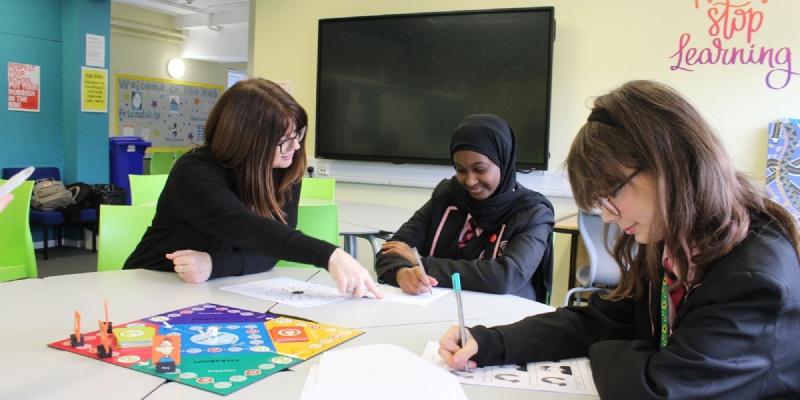A welcoming area for autistic students
- Home >
- News & Events >
- News articles >

Brentford School for Girls are updating their ASD Centre to make it even more inviting and engaging for their autistic students. The ASD Centre on site at the school is only one of around four that exist in a mainstream girls’ school in the whole country. The current provisions in place and the exciting changes underway lead the way for understanding autism in girls and supporting them in a mainstream environment.
Autism is a hidden disability which affects communication and interaction with the world. Autistic girls are often diagnosed later than boys and tend to internalise their anxieties so that fears, worries or anger are displayed at home at the end of the day, rather than at school. However, if school is a challenging environment due to difficulties with friendship issues, or communication needs in the classroom, there needs to be a space where autistic girls can seek out to self -regulate and manage any heightened feelings. If they can do this in school, it reduces the feelings of stress and pressure at home.
The Centre provides a calm and quiet setting. The large glass windows allows for plenty of natural light to enter but also offer students an almost panoramic view of the sports field (which is now a luscious green - some ex-students amongst you may remember it used to be a red clay!) and the picnic area around the large tree, which is a prime spot for watching wildlife eating seeds off the bird feeder. When the outside world is too overwhelming, the black-out blinds can be pulled down and students can focus more easily on their work or strategies for self-regulation.
The ASD Centre also offers a newly-decorated Chill Out room with dark walls and LED lights. This serene space provides a safe hub for students who need a short amount of time to reduce heightened feelings or behaviour. There is a projector to help build a feeling of calm; the students know it’s used by one student at a time, so it’s their time to have a personal space and use their strategies for self-regulation. We plan to put in more sensory equipment and use this alongside a sensory circuit in our other small classroom. This would enable students to have a short amount of time self-regulating then access the mainstream environment outside the Centre with reduced hyperactivity or anxieties.
The main area is a large classroom table area for 12 students with an interactive white board and a reading corner. The classroom table is a horseshoe shape to allow students to have personal space but also to face each other for optimum opportunities for developing communication and interaction skills. The students value the space to work away from the hustle and bustle of the classroom or mainstream environment - this can timetabled opportunities or based on a staff directive: if a TA is supporting in class and sees that a quieter space is needed for the student, they can take the student to the Centre to work.
When the students start in Key Stage 3, where necessary there are social communication groups or life skills groups. These sessions focus on the explicit teaching of social skills or life skills to support students to navigate through society from anything from personal hygiene to social communication. All strategies to support students are shared with pastoral and teaching staff so that there can be consistent support of needs across the school.
As the students progress through to Key Stage 4 and year 11, the focus increasingly turns to life skills and independent living for the students who need this alongside academic support. There is a close link with SEN Hounslow and the Connexions team there, as well as at least two 1:1 meetings with the school careers advisor and a small group trip to Richmond and West Thames College. The students explore different pathways and the main focus is on the aspirations of the individual student.
Our weekly Pet Therapy sessions with the adorable Rudi are a highlight of the week for many of the students. Rudi has some timetabled sessions with a small number of students but is also around during break and lunch for strokes and cuddles. So many of the students adore animals and find animals easier to communicate with than people so Rudi provides a talking point for the students to talk to each other and a chance to learn the responsibilities of looking after a pet!
Most of all, it is the other autistic students that welcome new-comers to the Centre. They provide peer support that no parent or staff member can emulate alongside a true understanding of each other, even if their needs and interests are different.
Through assemblies and fundraising, as well as day-to-day inclusion, all our students are encouraged to celebrate autism and welcome the spaces and strategies that support the autistic needs of our girls.

